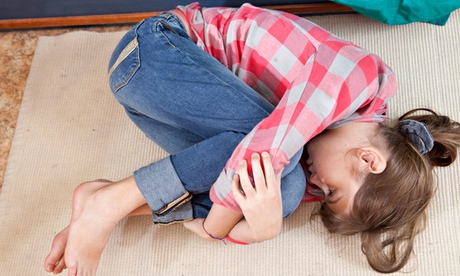
Last week, reports suggested that teenagers diagnosed with "growing pains" may, in fact, develop osteoarthritis. This was based on a Danish survey of 3,000 adolescents published in BMC Pediatrics. Teenagers with knee pain were most at risk without treatment, though physiotherapy exercises can help. So are growing pains more than merely a harmless rite of passage? Should we put our children into MRI scans to investigate them as fast as possible?
The solution
First, "growing pains" is a misnomer – the pain has nothing to do with growing. Paediatric rheumatologists prefer the term "non-specific limb pains of childhood" (NSLPC) – clumsy but more accurate. Also, teenagers don't get growing pains; they only occur in three- to 12-year-olds. NSLPC is a common condition, with up to 37% of children between the ages of four and six troubled by it. NSLPC has typical symptoms; in two-thirds of children the pain is in the shin, calves, thighs or back of the knee and does not involve any joints. It occurs on both sides, starts in the late evening and quite often will wake the child because it can be quite intense.
The pain can last from minutes to hours and can occur regularly for a few years. The painful area looks normal and isn't hot or swollen. According to Dr Barbara Ostrov, a paediatric rheumatologist at Penn State Hershey Medical Centre, these are symptoms of classic NSLPC. She would reassure parents and tell them to avoid unnecessary blood tests and scans.
However, warns Ostrov, any pain that does not fit this pattern – especially if it occurs in older children, affects only one limb or joint, is still hurting during the day, or is in a part of the body that is red or swollen or has been injured – needs to be seen by a doctor. The serious "other" diagnoses that parents and doctors worry about include bone tumours and rheumatoid arthritis.
NSLPC itself is still a mystery. Growing pains were first mentioned in the medical literature in 1823 by Marcel Duchamp, a French doctor. No one really understands the cause – theories include "mechanical problems" such as flat feet and knock knees causing pain, increased physical activity leading to build-up of metabolic waste products that cause pain in the evening, lower pain thresholds, reduced bone strength and a relationship with restless legs syndrome in later life. There is most evidence for a link between overuse and NSLPC.
On the plus side, children get better and episodes can be helped by warm water bottles, rubbing the site of pain, cuddling the child and paracetamol. There is some research showing that stretching muscles helps. But if you have a teenager with leg pain, then it isn't growing pains, and if it persists it needs investigating.

